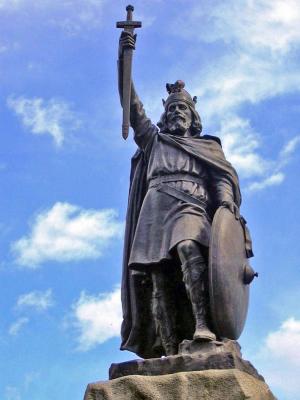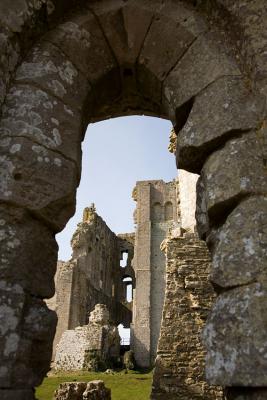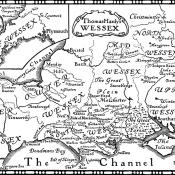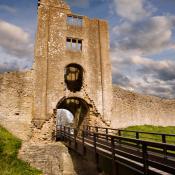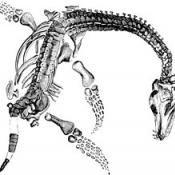Roman rule ended in the 5th century. A large defensive ditch on Cranborne Chase in the north-east of the county, called Bokerley Dyke, enabled local inhabitants to fight off the Jutes and Saxon people for a surprisingly long time. A group of Romano-British inscriptions dating from this period have been found at Wareham.
When the Roman road across Cranborne Chase was rebuilt in the 6th century, the Saxons finally advanced into the county and quickly establishing a pattern of farming and settlement that largely endures to this day. Initially part of Wessex, along with Hampshire and Wiltshire, the first record of 'Dorset' dates from 841. Christchurch and Shaftesbury are both Saxon towns, the latter founded by Alfred the Great, whose two older brothers, Ethelbert and Ethelbald, are buried there. Sherborne, meanwhile, whose name is of Saxon origin and means 'place of two streams', rose to become the capital of all Wessex.
The Saxon kings established monasteries, which soon became important landowners and centres of power. St Martinms church at Wareham is reputedly the oldest church in Dorset, although there are many other known Saxon foundations including Shaftesbury Abbey and Sherborne Monastery. At the start of the 8th century the large diocese of Winchester was split in two and St Aldhelm of Sherborne was appointed first bishop of the West Saxons.
Dorset played an important role in Saxon politics. Coenred, the sub-king of Dorset at the end of the 7th century, was father to one of the most famous of the early kings of Wessex, King Ine.
King Edweard, whose accession to the throne in 962 almost caused a full-blown civil war, is thought to have been murdered at Corfe Castle (Corfe is Saxon for 'gap') by his stepmother Elfryda, who wanted her own son, Ethelred the Unready, on the throne. Edweard’s body was taken to Wareham and then to Shaftesbury, where he is now remembered as a saint, while Ethelred is buried at Wimborne.
Legend has it that in 876 King Alfred was involved in trapping a Danish fleet at Arne, causing 120 ships to be wrecked at Studland.
he last of the Saxon kings, Harald, fought at the battle of Hastings under a golden lion, iconography long associated with Dorset that has now been incorporated into the Dorset flag.
- History

